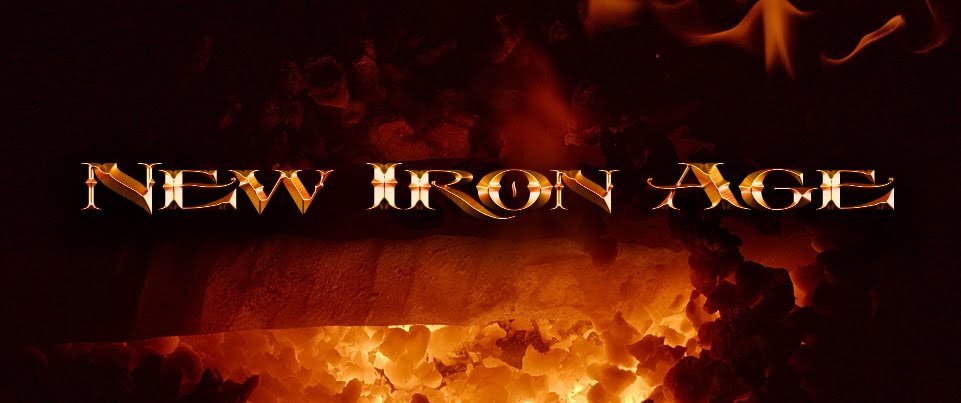Philip
Jose Farmer (1918-2009) was a well-regarded genre author during his
lifetime, and even if his star has dimmed somewhat over time, in the
60s and 70s he was considered a pioneering writer and is still
mentioned in the same breath as names like Theodore Sturgeon, Robert
Heinlein, and Arthur C. Clarke. He won three Hugo awards in his
life, and is still spoken of with respect today, which makes it all
the more mysterious that this book is so bad.
Farmer
had a deep fascination with classic pulp characters, and famously
wrote literary mashups where he posited the “Wold Newton family”,
creating elaborate family trees that connected characters like Doc
Savage, Tarzan, and Dorothy Gale as part of a single bloodline
created by aliens. It was undertaken with enormous affection for the
pulp era, but it amounts to little more than an epic work of
fanwank at this point.
The
unfinished Hadon series falls into this category, as the setting for
the two books is a fictionalized Africa circa 10,000 BC, where inland
seas set the stage for massive prehistoric empires centered on the
city of Opar. Opar was a fictional city created by Edgar Rice
Burroughs for his Tarzan novels, set deep in the (then) unexplored
interior of Africa. He depicted it as a lost colony of Atlantis
filled with fabulous wealth, probably influenced by the tales of the
land of Ophir, mentioned in the Bible as a wealthy land that paid
tribute to King Solomon.
So
the Hadon stories – starting with Hadon of Ancient Opar and
continued in Flight to Opar – were essentially a fan writing
backstory for a setting from Burroughs’ Tarzan continuity. As
such, it is not really meant to take place in the real world, and
Farmer is free to be as creative as he likes. The essential idea
seems solid. Howard did much the same kind of historical-fantastical
imagining to create the Hyborean Age, and as a place to set stories
of adventure, it has real promise.
I
have the first book around here somewhere, but this was the one I
could find. It features a remarkably poor Ken Kelly illustration on
the cover, making it look like a supremely generic barbarian fantasy
novel, and it would probably be more entertaining if it was something
more on the level of The Alien. Inside are a bunch of pretty
piss-poor Roy Krenkel pen and ink illustrations, which might look
better if they were printed at a higher quality, but maybe not.
The
prose in this book is just terrible, with rote, declarative sentences
and a very mechanical, dry style of narrating action. Some of the
violence in this book is quite bloody, but it is never exciting,
because Farmer uses a tedious “then this, and then this happened,
and then this happened” method of describing it. At its best the
writing is workmanlike and passionless, at worst it is criminally
dull and almost unintentionally funny in the way it belabors
unimportant details and elides past anything that might be actually
exciting.
The
pacing and structure are even more egregious, as we open up with a
closely-detailed yet extremely uninteresting sequence where Hadon has
to find a way to head off pursuers who chased him out of the
previous book. He’s got a narrow pass to defend, a girlfriend with
a sprained ankle, and like forty guys coming after him. You would
think this could be an awesome opening action sequence, and yet it is
so dull you will be flipping ahead to see where it ends. There’s
more chasing, traipsing around in the woods, this and that, and yet
nothing gathers any kind of momentum or excitement.
Then
the heroes reach the city they were headed to (not Opar) and the
plot, such as it is, screeches to even more of a halt. Now we pull
back and instead of scenes and drama we get narration and stultifying
amounts of infodump, followed by tension-deadening time skips and
then more arbitrary plot points to move things along to the actual
flight to the titular Opar. Again we get action that is described so
badly it is boring and static, a lot of summarizing and time
skipping, and a drawing back from the narrative to treat it like part
of a synopsis.
The
violence and the setting are very S&S, despite that there is no
actual, real magic onscreen, as it were, just stories and
superstitions. The theme of one man fighting to protect what he
loves is the right kind of angle, and Hadon is certainly no paladin.
He tries to do the right thing, but he often lets people die when
it’s the expedient thing to do, and he doesn’t try to save
everyone.
What
this book doesn’t have is any spark or fire to it. Any blood and
thunder. The action is at a remove, and none of the characters seem
to have very strong feelings. Even Burroughs’ more Victorian
sensibilities allowed for more emotion and character than this. I
don’t know. Farmer made plans for more books, but he never got
very far, and the third book was never published in a complete form,
being pieced together by author Christopher Paul Carey and put with
the first two in an omnibus edition much later. Maybe Farmer was
sick of the story, and just didn’t care about it. It certainly
reads like he didn’t.




